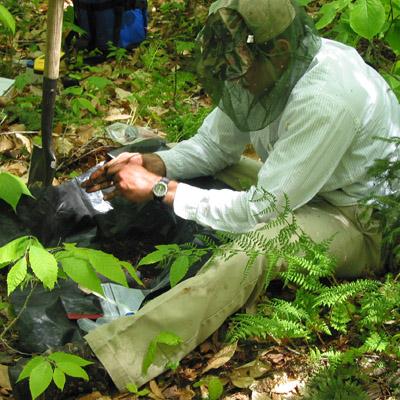Nitrification Rates and Stream Nitrate Export across NERC Sites

Nitrogen is the major component of the Earth’s atmosphere and essential for many biological processes. Most of the nitrogen in the air is not available for biological use, but over the past decades, burning of fossil fuels has contributed to elevated nitrogen deposited as part of acid rain. However, it is difficult to assess the effects of this increase because the deposited nitrogen is rapidly transformed in forest soils and difficult to trace.
To better understand the effects of increased nitrogen in forest soils, NSRC researchers studied a portion of nature’s nitrogen cycle called nitrification. Nitrification is the conversion of ammonium into nitrates by soil bacteria. Researchers collected soil samples from forested watersheds in New York, Vermont, and New Hampshire and compared rates of nitrification with measurements of tree species, topographic features, and soil properties. The effort tested the nitrification method over different seasons, determined common factors that affect nitrification rates, measured rates in riparian seeps, and examined spatial relationships with stream export.
A 1-day test method was reliable when used at different times of the year. Nitrification rates depended on distribution of tree species, with lower rates where conifer species made up a greater portion of the tree biomass. Rates were related to the ratio of carbon to nitrogen in the soil and were elevated in high-pH seeps even though soils were saturated. Annual stream export of nitrate was best predicted using soil measurements taken close to the watershed outlet. This research clarified relationships and contributed to our understanding of the biogeochemical effects of human impacts on the Northern Forest.
